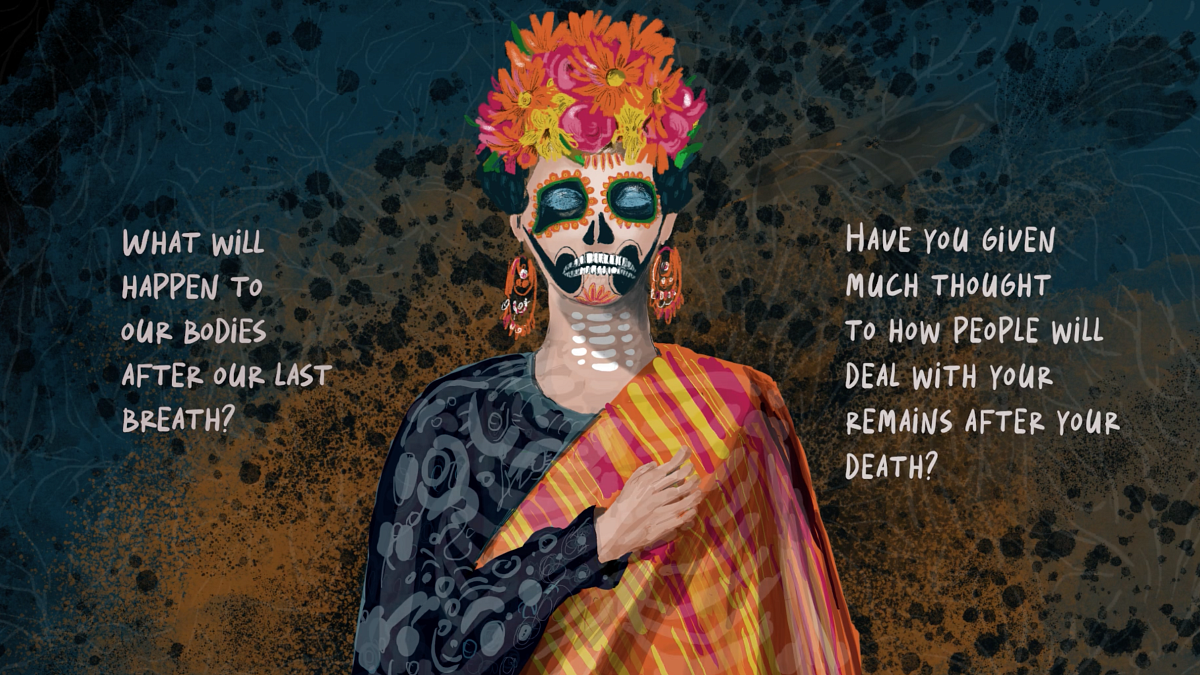
“Have you given much thought to how people will deal with your remains after your death?”
It’s a question that typically comes with a flurry of emotions. Yet in her capstone video project, recent Multimedia Journalism Master’s graduate Rita Sabler ’23 poses it calmly and without alarm.
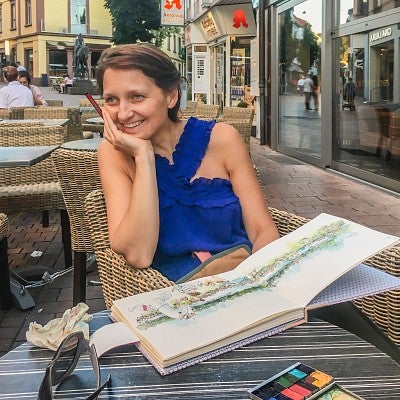
Sabler’s project is a documentary about funerary practices. While working on the video, she spent a lot of time in funeral homes and cemeteries to build her journalistic skills and learn how to document something “taboo” in an engaging way.
And she loved every minute of it. Sabler is a lifelong student. She says she’s “still trying to figure out what [she] wants to be when [she] grows up.” In fact, her most recent master’s degree from the SOJC is her fourth degree. Before that, she earned a master’s in multimedia design from the Elisava School of Design in Barcelona and another in linguistics from University of California, Davis, and she began her university career with a bachelor's in psychology from Lewis and Clark College.
Using art in an animated documentary
After starting the Multimedia Journalism Master’s program, Sabler found herself drawn to a central question: What happens to our bodies after we die? For her capstone project, a short documentary titled “Final Disposition,” she set out to examine this question as well as various types of funeral practices around the world and new ways of disposing of human remains that have been increasing in popularity.
“How we dispose of human remains has always been shrouded in ritual and tradition,” Sabler said. “The subject of death is taboo in many cultures. The burial practices are driven by cultural norms and religious attitudes toward the afterlife. The way we dispose of human remains is slowly undergoing change to match the processes found in the natural world. As unpleasant as the subject could be, I gently invite my audience to think about what we want to happen to our bodies after we pass.”
“Final Disposition” is a journey through this topic, led by Sabler’s calming voice and paired with a peaceful score playing behind her own artwork.
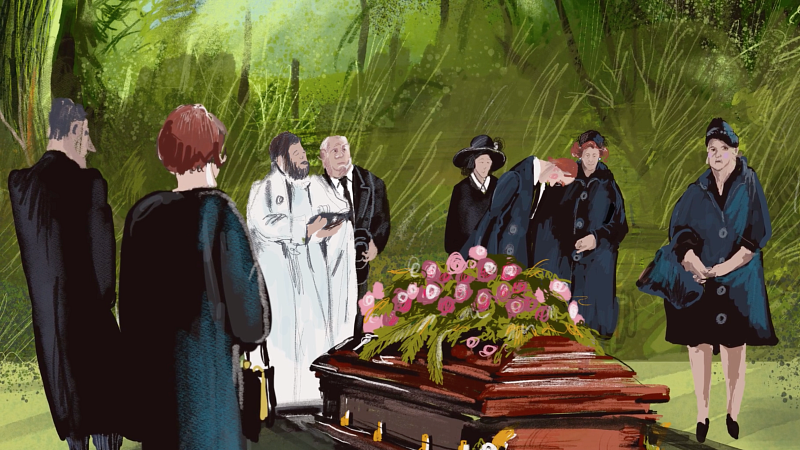
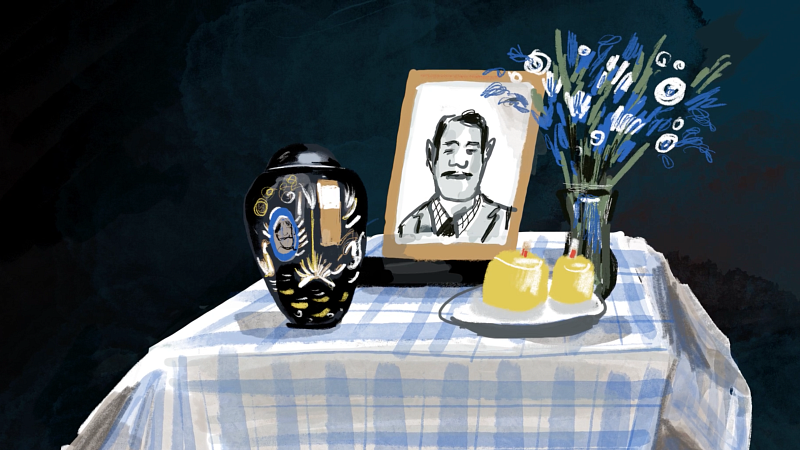
“Drawing is my method of telling stories and reporting, so that’s what I used to work on my terminal project,” she said. “For my thesis, I wanted to combine the drawings with some simple animation, so it made sense to create drawing digitally. I used Procreate on an iPad to create the drawing and used Adobe AfterEffects and Premier to put the film together. I also feel that drawing is a much gentler approach to the subject of death, which is scary for most people, something that most of us do not like to see or think about.”
In the video, the audience learns from a funeral director, cemetery director and funeral service educator about this universal, but often unmentionable, topic. Sabler also transports the viewer to countries like Tibet and Madagascar to examine their funeral practices, many of which differ greatly from Western practices.
Sabler doesn’t leave her audience with one option or “right answer” for how she believes remains should be dealt with after someone’s passing. Instead, she simply starts a difficult conversation respectfully and tenderly.
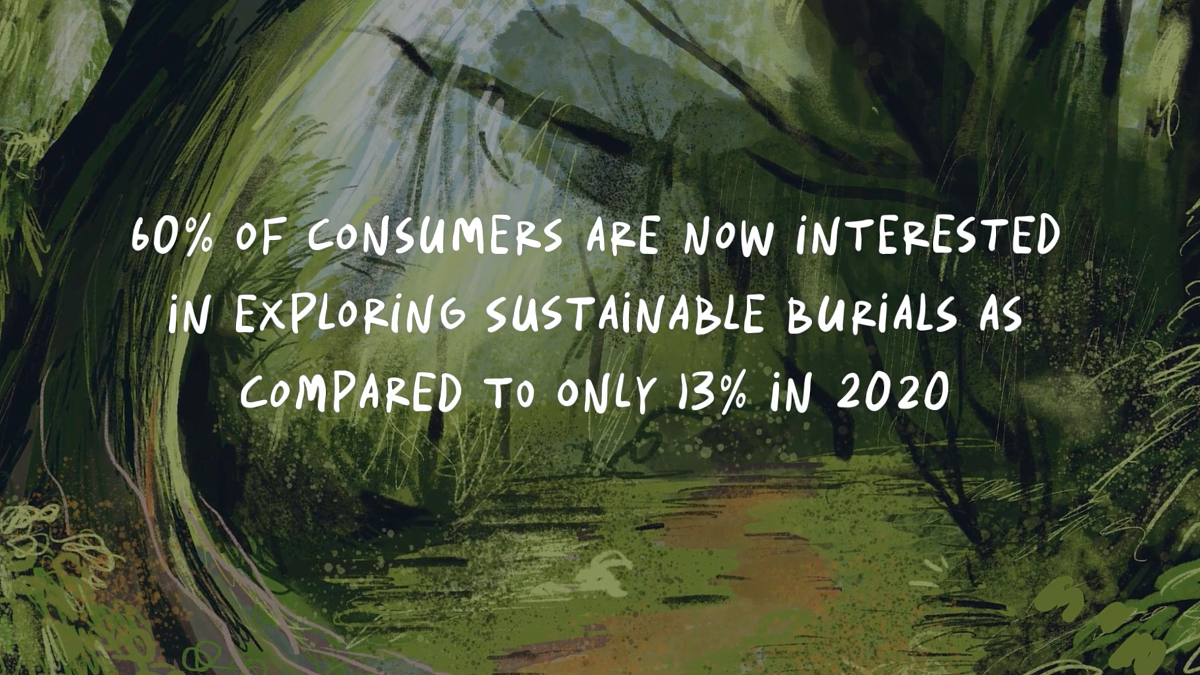
Practicing art and visual journalism
After completing “Final Disposition” and graduating with her Multimedia Journalism Master’s degree in spring 2023, Sabler began work as a practicing artist and part-time visual journalist for Oregon Public Broadcasting.
“Eventually, I would love to start a program in visual reportage, training artist reporters how to write and draw the news of the day,” she said. “Nothing like this exists in the world, as far as I know. I also hope to never retire.”
Watch Rita’s Capstone Documentary
—By Jillian Gray, class of ’25
Jillian Gray, class of ’25, is a public relations and advertising major with a minor in multimedia. Outside of Allen Hall Jillian is a chai tea enthusiast and will always say yes to exploring a new bookshop.
